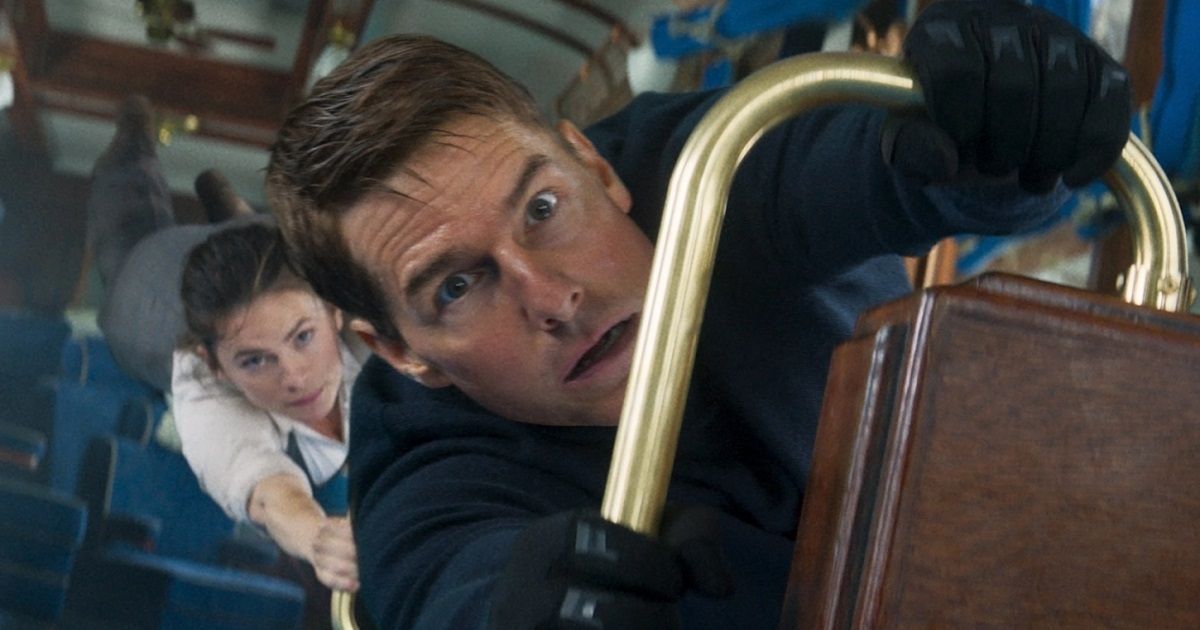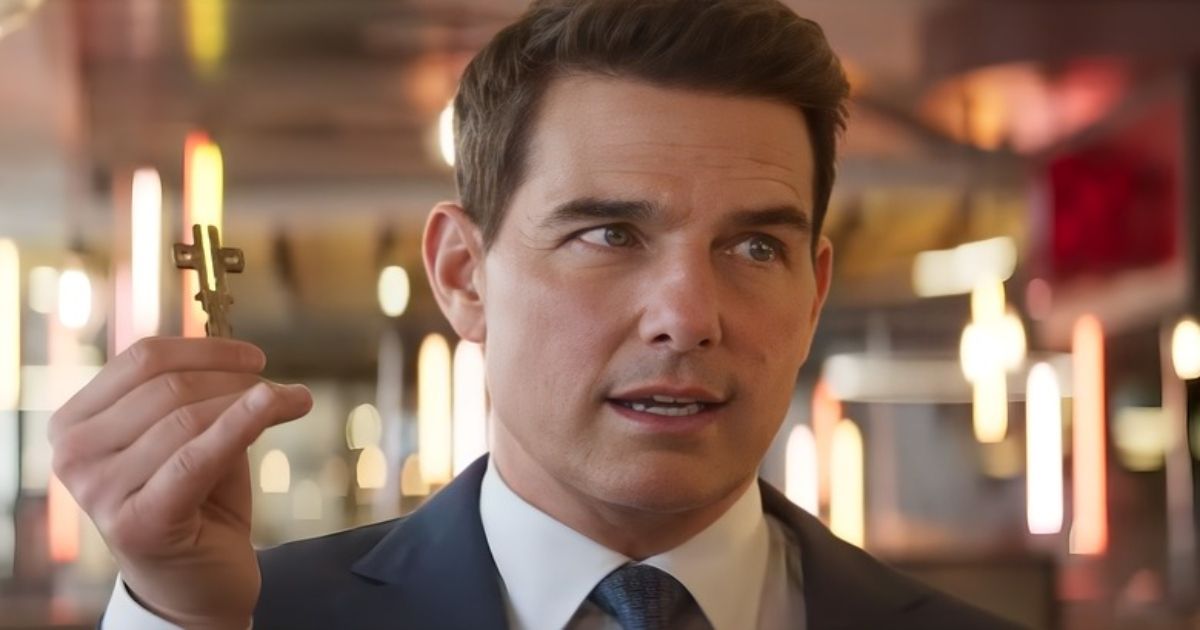Tom Cruise is widely thought to be one of the few remaining bankable movie stars in the world, and the Mission: Impossible franchise is one of the continuous cornerstones upon which his career is built. The Mission: Impossible series has always done fairly well at the box office, though it has never really exploded in the same way that a major franchise like the Marvel Cinematic Universe has. The largest grossing entry in the series is 2018’s Mission: Impossible – Fallout, which opened with $61 million domestically and finished its worldwide run with $786 million.
Grosses like that have been more than enough to justify continuing the Mission: Impossible series, which typically opens around $50-$60 million and then shows strong box office legs as it gradually grows to the larger numbers. Expectations for the latest entry, Dead Reckoning Part One, were higher than usual, though. Not only was the film building on the immensely successful three-film run of Ghost Protocol, Rogue Nation, and Fallout, but it was also coming off the groundbreaking success of Cruise’s Top Gun: Maverick last year.
However, after opening lower than expected at $54 million, Dead Reckoning Part One has run into some turbulence. It dropped a whopping 65% in its second weekend, much more than the less than 50% that has become the norm for the series. With that and the astronomical $290 million budget in mind, it’s beginning to look like the latest Mission: Impossible film might be the first entry in the series in a long while not to be considered a box office success. There are a handful of factors that are leading to this underperformance, here are four of the most notable:
The Barbenheimer Effect
One of the most clear factors in Dead Reckoning Part One’s box office failings is its release date. While it was nearly impossible to predict that Barbie and Oppenheimer would explode to the degree they have, it was already apparent that both halves of the “Barbenheimer” double billing had immense anticipation. While Dead Reckoning had managed to excite the dedicated and built-in fan base for the Mission: Impossible series, it really needed to crossover into general audience interest to ensure its success. By opening only a week prior to both Barbie and Oppenheimer, the new Mission: Impossible was instead pushed into the background almost immediately after opening.
Dead Reckoning Part One received an “A” CinemaScore from audiences, which would typically bode well for a solid hold at the box office week-to-week. Unfortunately for the film, even that has failed to save its box office performance. Both Barbie and Oppenheimer also received “A”s, which added even more momentum to the incredible word-of-mouth surrounding both films. Dead Reckoning had already opened lower than it was expected to, and it was then immediately overshadowed by two of the biggest breakout hits of the summer.
The Stunt Factor
The Mission: Impossible films have always thrived on their excellent stunt work. The last few films in particular have made these incredible stunts central to their marketing. While Dead Reckoning Part One continues the trend of crafting outstanding stunts, as it features some of the franchise’s best practical effects and action sequences, it was not quite as marketable as it the previous films had been. Ghost Protocol had Cruise climbing the tallest building in the world, Rogue Nation had him strapping himself to the outside of a jet as it takes off and Fallout had both the halo jump and the helicopter chase sequences.
The advertising for Dead Reckoning Part One was heavily relying on the moment of Cruise riding a motorcycle off the edge of a cliff. As cool as that stunt is, and as well as it works within the movie, it doesn’t quite have the same grand scale as the stunts that were central to the three previous films. The central stunts of the previous three films were truly mind-blowing and unbelievable, while those of Dead Reckoning didn't bring that same energy. As technically impressive as it is, it didn’t have that “must-see” factor.
The same goes for the extended train sequence at the end of the film. Although it may be one of the best action sequences of the year so far, the film’s advertising made it look like any of the other dozens of train fight sequences that audiences have seen time and time again.
Seventh Film in the Series
One major box office trend that has become increasingly noticeable throughout 2023 is that general audiences are becoming less and less enthralled with the major franchises and film series that once dominated the multiplexes. Films like the fifth Indiana Jones adventure, the tenth Fast and Furious movie, and the third Ant-Man – which is also the 31st movie in the wider MCU – have all fallen short of box office expectations stateside.
Indiana Jones and the Dial of Destiny opened to just $60 million and then fell 55% in its second week, Fast X opened to $67 million and then fell 66%, and Ant-Man and the Wasp: Quantumania opened to a solid $106 million before falling a catastrophic 70% in its second weekend. While Fast X was saved by its international box office, it’s clear to see that, at least domestically, general audiences are not showing up in the same massive, consistent numbers they had for the previous films in these increasingly extensive franchises.
The newest entries in these series are increasingly beginning to look too inside-baseball to general audiences who are unfamiliar with the brands. It’s a lot harder to convince someone to jump on board with the seventh Mission: Impossible than it is for the first or second entry in another series. Asking a casual viewer to either catch up on six other movies or just accept that they’ll be lost in the story isn’t exactly the best way to grow an audience.
That’s a big part of the reason why a movie like The Super Mario Bros. Movie was able to become the highest-grossing movie of the year. Despite having a recognizable IP to build on, the movie didn’t require audiences to catch up on anything. It was a standalone story that was easy for both casual viewers and die-hard fans to jump into.
It’s Marketed as “Part One”
On top of that, Dead Reckoning Part One had the added hurdle of those last two words in its title: ”Part One.” While it’s nothing new for major blockbuster films to be split into two parts, the transparency of labeling these films as “Part One” and “Part Two” from the get-go has largely become a thing of the past. Just this summer, films like Fast X and Spider-Man: Across the Spider-Verse have both been the first chapters in a two-part story, but neither of them were marketed as such.
The same is true of other recent literary adaptations, such as 2021’s Dune and 2017’s It. Both adaptations split the story of their respective books into two films, with the rest coming in another film a couple of years later – It Chapter Two was released in 2019, and Dune: Part Two is set for release this fall. However, neither of these series’ first films were marketed as “Part One.” They were just Dune and It. The "Part One" was not revealed to audiences until they were actually in the theater watching the movie, with Dune making it clear from the beginning and It revealing that fact at the end.
The last major film we can see that was actually released as a “Part One” and “Part Two” was The Hunger Games: Mockingjay, way back in 2014 and 2015. Although Avengers: Infinity War and Avengers: Endgame were originally announced as Infinity War Part One and Infinity War Part Two, and the Spider-Verse sequels were initially titled Across the Spider-Verse Part One and Across the Spider-Verse Part Two, those franchises had the forethought to change their titles and differentiate the individual movies. That’s because advertising your movie as “Part One” makes it seem to audiences like they won’t be getting a complete story.
Why would audiences bother to show up for an incomplete experience? They could easily just wait for “Part Two” to release and then catch up before seeing that, rather than waiting a year or more between films. Ironically, Dead Reckoning Part One is a much more complete and standalone story than both Across the Spider-Verse and Fast X. But the creative and marketing teams behind both of those films were able to recognize they would drive more interest if they pitched the films to audiences as cohesive and contained stories.
If the new Mission: Impossible had dropped the “Part One” and been titled simply Mission: Impossible – Dead Reckoning, general audiences might've been more interested in it. As a result of that mistake, Dead Reckoning Part Two will now have the additional hurdle of following a "Part One" that failed to find mass appeal.





